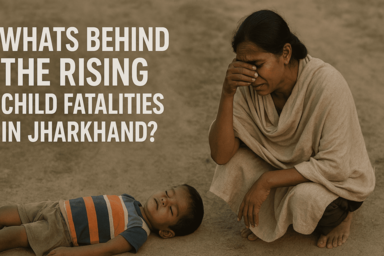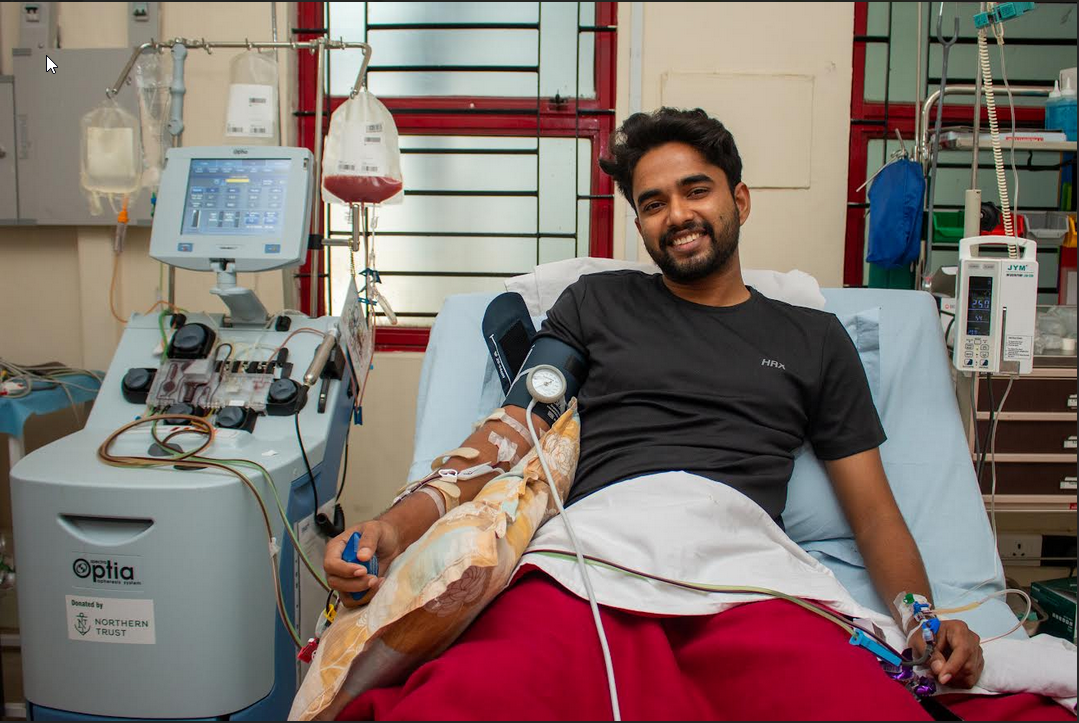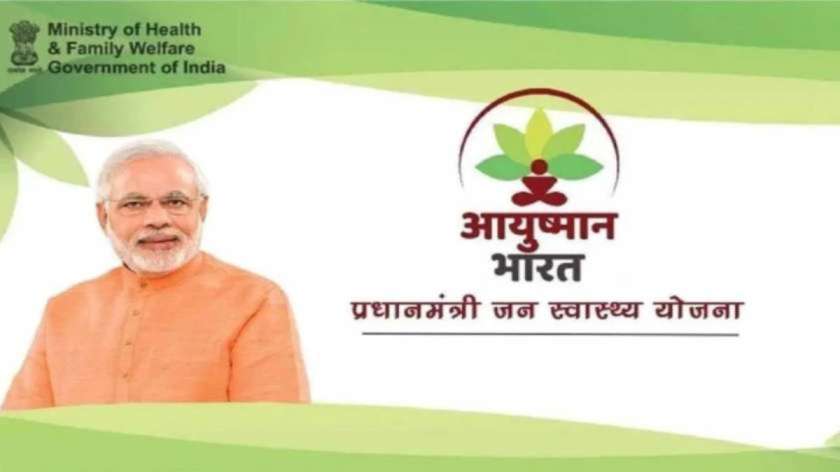In the remote corners of India’s eastern state of Jharkhand, a disturbing health crisis has emerged in a small village, shaking the local community and sparking urgent investigations. Over the course of one week, a mysterious illness has claimed the lives of five children and left 22 others suffering from severe, malaria-like symptoms. As panic spreads and families mourn, questions arise: What exactly is this disease, and could it be the harbinger of a hidden epidemic in a region already vulnerable to public health challenges?
The tragedy escalated as five young children lost their lives. In addition, 22 individuals both young and old began experiencing alarming symptoms reminiscent of malaria: yellowing of the eyes, persistent cough, high fever, severe headache, and general malaise. These symptoms, which sent shivers down the spine of the local community, prompted immediate action by healthcare authorities.
Local officials received distress calls from community members who described their children’s deteriorating health and the rapid onset of symptoms. With lives at stake, a dedicated medical team was dispatched to Nagarbhitha village on a brisk Sunday morning. Their mission was to assess the situation, provide immediate care, and collect critical samples that might hold clues to the cause of the outbreak.
Upon arriving in the village, the medical team swiftly set up a temporary health check-up camp. Here, they examined residents, took detailed medical histories, and collected blood samples from those exhibiting symptoms. The urgency was palpable: understanding the nature of the illness was not only a matter of providing timely treatment but also of preventing further loss of life.
The collected blood samples were carefully packaged and sent off to a well-equipped laboratory in Dhanbad for in-depth analysis. Medical officers on the scene emphasized that these tests were crucial to determine whether the disease was related to malaria or perhaps a completely different pathogen. Until the lab results returned, the community was left in a state of anxious uncertainty, with families desperately hoping for answers.
A local health officer, speaking under conditions of strict confidentiality, explained that initial investigations were focused on identifying the pathogen responsible for the symptoms and understanding why children seemed to be particularly vulnerable. The officer also mentioned that while similar symptoms might be seen in other common infections, the severity and rapid progression in this outbreak were cause for concern.
While the exact cause of this mysterious illness remains under investigation, several factors might be contributing to the outbreak. Public health experts have noted that rural areas in India often face a unique set of challenges, including poor sanitation, inadequate healthcare infrastructure, and a higher prevalence of vector-borne diseases.
1. Environmental Conditions and Vectors: Sahibganj district, like many parts of Jharkhand, has a tropical climate with seasonal variations. During certain times of the year, environmental conditions such as stagnant water and heavy rains can lead to a proliferation of disease-carrying vectors like mosquitoes. Although the symptoms reported in this outbreak resemble malaria, initial investigations suggest that the illness might not be a typical case of the disease. Still, the possibility of a new or mutated strain of a vector-borne pathogen cannot be ruled out.
2. Malnutrition and Immune Vulnerability: Rural communities often struggle with issues of malnutrition, which can weaken the immune system and make individuals, especially children, more susceptible to infections. Poor nutritional status may impair the body’s ability to fight off infections, leading to more severe manifestations of disease. The fact that children, who are generally more vulnerable, have been the hardest hit in this outbreak raises questions about the role of malnutrition and other underlying health factors.
3. Water and Sanitation Issues: Access to clean water is a persistent challenge in many parts of rural India. Contaminated water sources can harbor harmful pathogens that cause a variety of diseases. Although the symptoms in this case include fever, cough, and yellowing of the eyes symptoms that can sometimes be associated with waterborne illnesses the specific cause of the outbreak remains elusive. Nevertheless, improving water quality and sanitation remains a critical public health measure in preventing such crises.
4. Unknown Mutagens and Emerging Pathogens: In some instances, outbreaks in remote areas have been linked to exposure to previously unknown environmental toxins or emerging pathogens. While nothing has yet been confirmed in this case, researchers are exploring all possibilities. Could there be a previously undetected virus or bacterium at work? Or is an environmental mutagen perhaps related to industrial runoff or agricultural chemicals playing a role? These are the kinds of questions that experts are racing to answer as the investigation unfolds.
This outbreak is a reminder of the myriad public health challenges that continue to plague rural India. Remote villages like Nagarbhitha often lack access to immediate medical care, and the consequences of delayed treatment can be devastating.
The following issues are critical in understanding the context of this crisis:
1. Inadequate Healthcare Infrastructure: Rural areas in India frequently suffer from a shortage of healthcare facilities and trained medical professionals. When an outbreak occurs, these communities are often ill-equipped to handle the sudden surge in patient needs. The rapid deployment of a mobile medical team to Nagarbhitha is a commendable effort, but it also highlights the systemic gaps that exist in providing consistent, high-quality healthcare to remote populations.
2. Limited Diagnostic Capabilities: Accurate and timely diagnosis is the cornerstone of effective treatment. In rural settings, however, diagnostic facilities are often scarce or located far away from the affected areas. Sending blood samples to a laboratory in Dhanbad, while necessary, introduces delays that can worsen outcomes. The lack of local diagnostic capabilities is a major hurdle in managing and containing outbreaks.
3. Socioeconomic Factors and Health Disparities: Poverty, malnutrition, and limited education further compound the public health challenges in rural India. These factors not only increase the susceptibility of individuals to infections but also hinder their ability to seek and receive adequate medical care. When a crisis strikes, those who are already vulnerable bear the brunt of the impact.
4. Stigma and Misinformation: In many rural communities, diseases are often shrouded in stigma and misconceptions. This can lead to underreporting of symptoms, delayed treatment, and even social ostracism for those affected. Combatting misinformation and fostering an environment where people feel safe to report illness are critical steps in improving public health outcomes.
In response to the outbreak in Nagarbhitha, local authorities and healthcare providers have taken swift action. A medical team was dispatched immediately upon receiving reports of the outbreak, and a health check-up camp was organized to assess the condition of villagers and collect necessary samples. This prompt response is crucial in containing the spread of disease and preventing further casualties.
While the precise cause of the outbreak remains unknown, experts are exploring several possibilities. The symptoms reported yellowing of the eyes, fever, headache, cold, and cough are reminiscent of malaria. However, the possibility of a new, emerging pathogen cannot be ruled out.
The fact that the victims in this outbreak are mostly children adds an extra layer of urgency. Children have developing immune systems, which makes them more susceptible to severe disease. When an outbreak affects the younger population, it not only results in immediate tragedy but also has long-term implications for the community’s future health and development.
Governments and non-governmental organizations (NGOs) have a vital role to play in tackling public health crises in rural areas. In the case of the outbreak in Nagarbhitha village, the swift response by a medical team is a positive sign, but it is only a temporary fix.
Government programs such as national health missions and rural healthcare initiatives aim to improve healthcare delivery in underserved areas. By increasing funding for rural clinics, investing in mobile diagnostic units, and enhancing telemedicine capabilities, governments can create a more resilient public health infrastructure.
While the immediate focus is on containing the outbreak and treating those affected, the long-term challenge is to prevent future incidents. The blood samples sent to Dhanbad will provide critical insights into the pathogen or toxin responsible for the illness. Once the cause is identified, health authorities can develop targeted treatment protocols and preventive measures.
Short-Term Measures
Rapid Response Teams: Deployment of mobile health units to conduct screenings and administer immediate care.
Public Health Awareness: Community meetings to educate residents about symptoms, hygiene practices, and the importance of early medical intervention.
Isolation and Quarantine: Implementing temporary measures to prevent the spread of the disease while the investigation is underway.
Long-Term Strategies
Infrastructure Development: Building more local diagnostic centers and improving healthcare facilities in rural areas.
Training and Education: Ensuring that local healthcare workers are well-trained to recognize and respond to emerging health threats.
Enhanced Surveillance: Setting up robust disease monitoring systems to catch outbreaks early before they spiral out of control.
Community Empowerment: Encouraging local participation in public health initiatives to ensure sustainable improvements in sanitation, water quality, and overall health practices.
While the immediate priority is to contain the current crisis and treat those affected, the long-term solution lies in transforming rural healthcare. With millions of lives at stake, it is imperative that we invest in better diagnostic tools, robust healthcare infrastructure, and community education.
As we move forward, let us remember that every life is precious. The loss of even a single life is a failure of our healthcare system. By learning from this outbreak and taking proactive measures, we can work towards a future where diseases are detected early, treated effectively, and, ultimately, prevented.

 By learning from this outbreak and taking proactive measures, we can work towards a future where diseases are detected early, treated effectively, and, ultimately, prevented.
By learning from this outbreak and taking proactive measures, we can work towards a future where diseases are detected early, treated effectively, and, ultimately, prevented.










.jpeg)



.jpeg)

.jpg)





.png)





.jpg)
